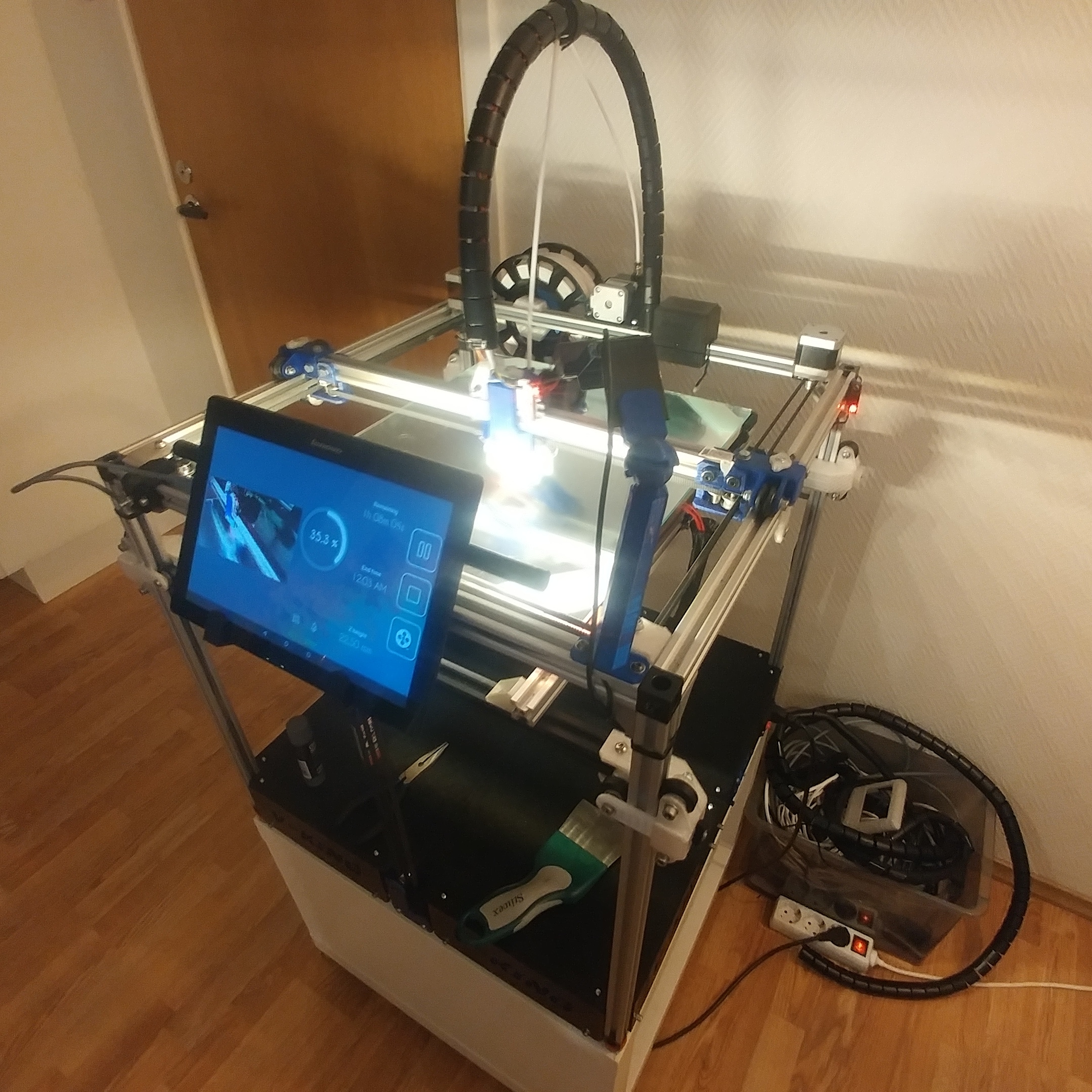

# Features - Easily maintainable - Direct drive - Supports BL touch - Filament sensor - Supports E3D Volcano type hotend - Extruder is exchangable, locking mechanism is compatible with Hypercube Evolution X-Carrige - Supports Hypercube Evolution Optical sensor homing, but I used it with sensorless homing # Parts # Electronics and movement - **Optical Sensor**: - **Prusha extruder gears**: - **Prusha idler spring** (any 15mm length, 3mm diameter, sufficiently tight spring will do): - **Turbine Fan 24V**: - **Nema 17 lenght 23mm**: - **BL Touch** (I used knockoff for proof of concept): - **E3D Volcano Hotend** (I used knock off as a stand in but I designed for volcano), 1.75mm filament, 24V Direct Drive: # Threaded bras inserts I used cheap ones from banggood, but like after they pulled out the 2nd time when I was fastening the hotend, I realized, my time is more valuable than what I saved D - Ruthex RX-M3x5.7 threaded inserts: # Screws - 1x M3 lenght 40mm - 2x M3 lenght 30mm - 1x M3 lenght 25mm - 1x M3 lenght 15mm - 2x M3 lenght 12mm - 2x M3 lenght 10mm - 4x M3 lenght 8mm - 2x M3 lenght 6mm Box of screws I used: # Known issues - fan and duct do not provide enough cooling for printing with 0.8mm layer height - optical sensor works unreliably with certain fillaments (especialy reflective PETG) # Optional: Cable connectors I got MicroFit 3.0 connectors from my local electronics store. I wanted an extruder that makes it as easy as possible. On standard prusha i3 MK3S extruder the process of changing nozzle is a real proccess.
#Hypercube printer plus#
To be able to print flxible filaments I needed direct drive extruder, plus i wanted to change my nozzles often.

The technology demonstrator will be launched in 2019.Inspired by Hypercube Evolution extruder, combined with the power of direct drive extruder and, BL touch and a filament sensor extruder. The HyperCube FPA is larger and has more pixels than previous instruments, allowing it to collect more data faster.
#Hypercube printer series#
The HyperCube interferometer is a miniature version of the interferometer used by the Harris Cross-track Infrared Sounder on NOAA’s JPSS series weather satellites.

HyperCube provides hundreds of hyperspectral bands for the best instrument resolution in the small satellite market. The satellite are developed in connection with the Space Dynamics Lab of Utah State University, who provides the spacecraft for the

A Fourier Transform Spectrometer, the HyperCube cubesat is much smaller and less expensive, and offers a more expedient implementation alternative to complex LiDAR wind measurement programs. It is a space-based threedimensional sounding instrument designed to measure the speed, direction, and elevation of wind in Earth’s atmosphere. HyperCube is a 6U CubeSat mission developed at the Harris.


 0 kommentar(er)
0 kommentar(er)
